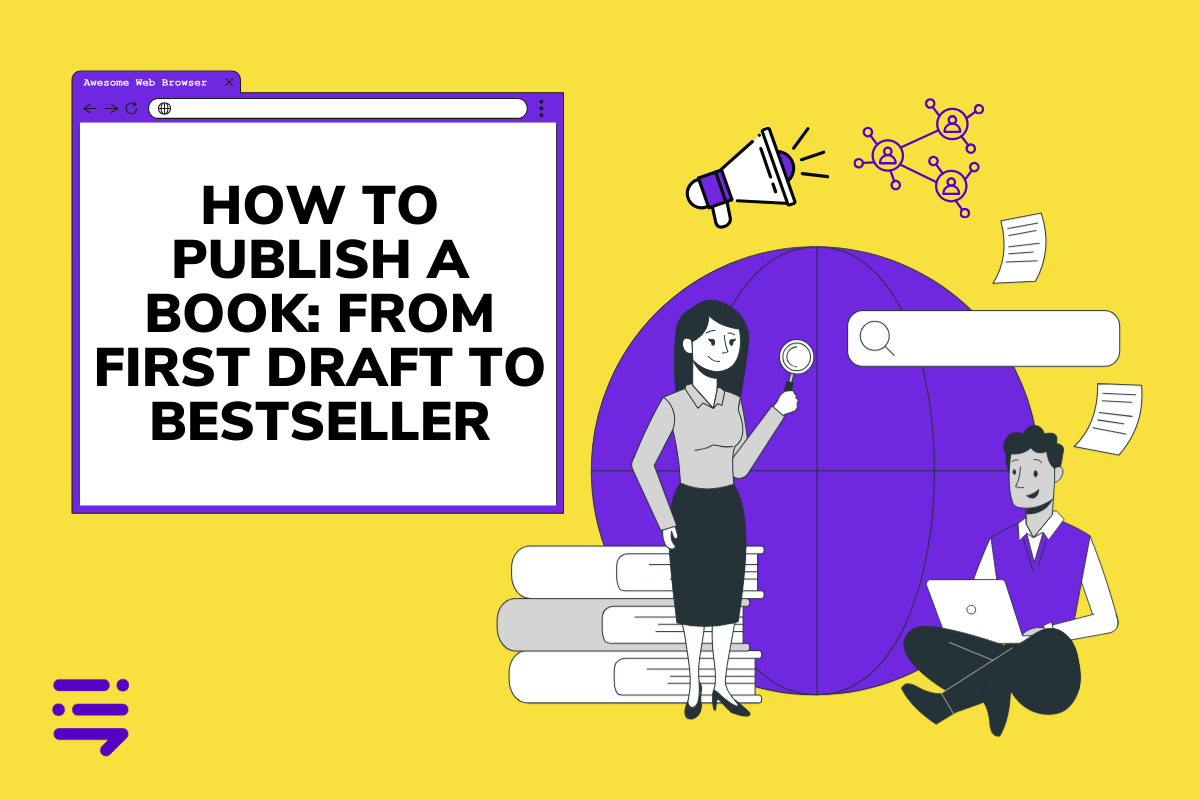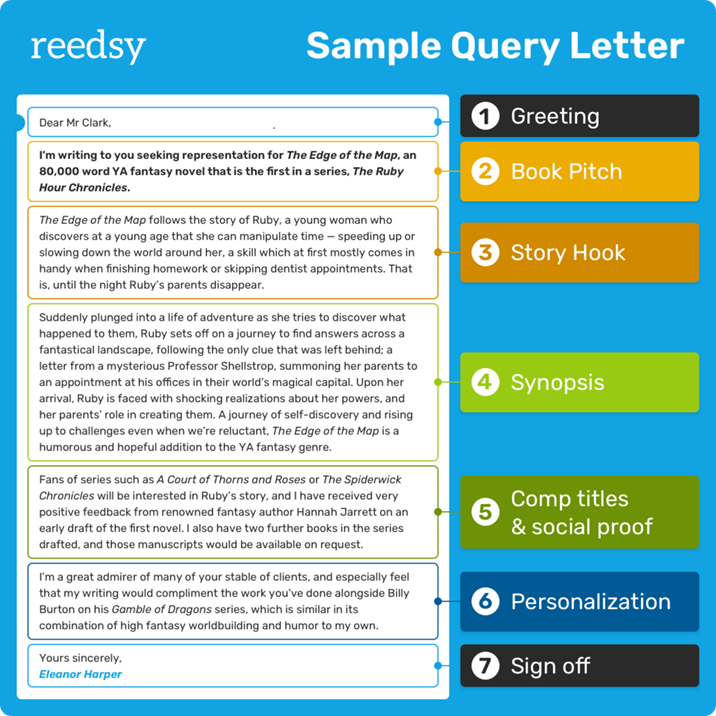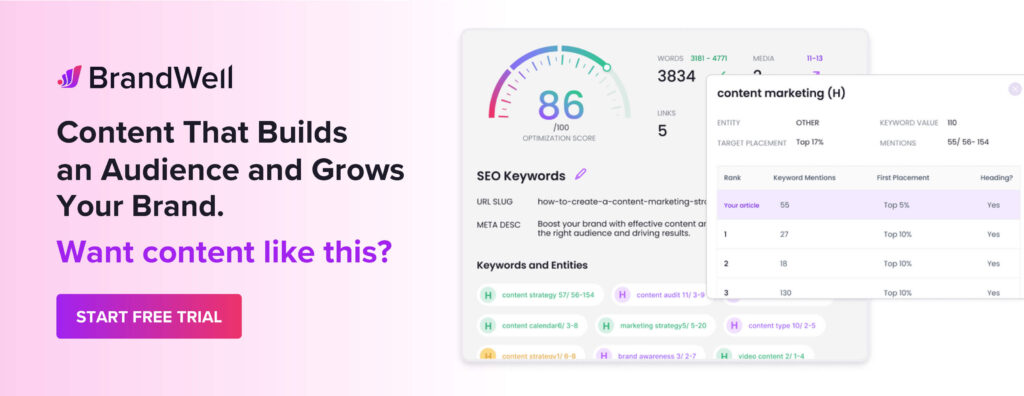Discover top guides, trends, tips and expertise from AIO Writers
How to Publish a Book: From First Draft to Bestseller
Julia McCoy
Thursday, 2nd May 2024
Imagine all those late nights and countless cups of coffee spent as you brought your manuscript to life, one word at a time. But now that it’s finished, you’re left wondering: how do I get my book published?
While publishing a book can appear overwhelming at first glance, finding good advice can make it surprisingly straightforward. Whether you choose to go the traditional route or self-publish, there are steps you can take to ensure your book reaches its full potential.
Imagine turning those pages of hard work into something people can’t wait to read. That’s our goal – tweaking till it shines and spreading the word far and wide. So grab a cup of coffee, sit back, and let’s get started on your publishing journey.
Table Of Contents:
- How to Publish a Book: Traditional vs. Self-Publishing
- Step-by-Step Guide on How to Publish a Book
- Maximizing Your Book Sales: Strategies for Success
- How to Publish an Ebook
- FAQs – How to Publish a Book
- Conclusion
How to Publish a Book: Traditional vs. Self-Publishing
So you’ve written a book and you’re ready to share it with the world. Exciting, right?
But hold up – before you start daydreaming about book signings and royalty checks, you’ve got a big decision to make. Will you go the traditional publishing route or dive into the world of self-publishing?
As someone who’s been in the publishing game for a while, I can tell you that there’s no one-size-fits-all answer. It all depends on your goals, your resources, and your willingness to roll up your sleeves and get to work.
Let’s break it down, shall we?
Pros and Cons of Traditional Publishing
If you don’t know how to find or reach your readers, don’t have an online presence, don’t have the time to spend online or dislike social media, want to be in a brick-and-mortar type of bookstore and have a publisher handle the marketing for you, the traditional publishing route may be the best option.
With traditional publishing, you get the prestige of being backed by a well-known publisher, plus a team of professionals to handle editing, design, and distribution.
Sounds pretty sweet, right?
But here’s the catch – landing a traditional publishing deal is no easy feat. You’ll need to find a literary agent, polish your manuscript until it shines, and prepare yourself for rejection.
Lots and lots of rejection.
Pros and Cons of Self-Publishing
Self-publishing is also a good option if you have a time-sensitive manuscript, as a commercial publishing company can take up to 18 months to get your book from manuscript to final production.
Self-publishing also puts you in the driver’s seat. Self-publishing services allow you to have complete control over your book’s content, design, and marketing. Plus, you get to keep a bigger chunk of the profits.
But self-publishing also means you’re responsible for every aspect of the process, from editing to distribution to promotion. It’s a lot of work, but it can also be incredibly rewarding.
So how do you decide which path to take?
Start by asking yourself some tough questions. How much control do you want over your book? How much time and energy are you willing to invest in marketing and promotion? And perhaps most importantly, what are your goals for your book?
If your dream is to see your book on the shelves of your local bookstore, traditional publishing might be the way to go. But if you’re more interested in reaching a niche audience or building your brand, self-publishing could be a better fit.
Ultimately, the decision between traditional publishing and self-publishing comes down to your unique situation and goals.
Step-by-Step Guide on How to Publish a Book
Okay, so you’ve decided to go the traditional publishing route. Congrats. Now what?
As someone who has published eight books, let me walk you through the steps of the publishing process.
Step 1: Find a Literary Agent
First things first – you’ll need to find a literary agent. Think of them as your book’s hype man (or woman). They’ll help you polish your manuscript, pitch it to publishers, and negotiate your contract. But how do you find the right agent for you?
Start by researching agents who represent books in your genre. Look for agents who have a track record of success and who seem like a good fit for your personality and working style. Once you’ve got a list of potential agents, it’s time to start querying.
A query letter is your chance to make a great first impression. Keep it short, sweet, and to the point. Include your proposed book title, a brief synopsis of your book, a bit about yourself, and why you think the agent would be a good fit for your project.
And don’t forget to proofread! A typo-filled query letter is a surefire way to land in the rejection pile.
Reedsy shares a free template for how to write a query letter.

Step 2: Prepare Your Book Proposal
If an agent likes your query letter, they’ll ask to see your book proposal. This is where you’ll get to showcase your book’s potential. Your proposal should include a detailed synopsis of your book topic, a market analysis, a promotional plan, and a few sample chapters.
Think of your book proposal as a business plan for your book. You’ll need to make a compelling case for why your book is unique, why it’s needed in the market, and how you plan to promote it.
It’s a lot of work, but a great proposal can make all the difference in landing a publishing deal.
Step 3: Submit Your Manuscript to Publishers
Once your book proposal is polished and ready to go, your agent will start submitting it to publishers. This is where the waiting game begins. It can take weeks or even months to hear back from publishers, and there’s no guarantee that your book will be accepted.
If a publisher does make an offer, your agent will negotiate the terms of your contract. This is where having an experienced agent comes in handy. They’ll make sure you’re getting a fair deal and that your rights as an author are protected.
Step 4: Negotiate a Publishing Contract
Speaking of contracts, let’s talk about what you can expect.
A typical contract from publishing services will include an advance (a sum of money paid to you upfront), royalties (a percentage of each book sold), and a publication timeline. Your agent will help you navigate the legal jargon and make sure you understand exactly what you’re signing.
It’s important to remember that a publishing contract is a legal agreement. Once you sign on the dotted line, you’re committed to working with that publisher. So make sure you’re comfortable with the terms before you agree to anything.
Step 5: Work With Your Editor
Once you’ve signed your contract, it’s time to get to work. You’ll be assigned an editor who will work with you to refine your manuscript. This can be a long and sometimes painful process, but it’s an essential part of the publishing journey.
Your editor will give you feedback on everything from plot and character development to prose style to cover design. It’s your job to take that feedback and use it to make your book the best it can be.
It’s not always easy, but trust me — a good editor is worth their weight in gold.
Step 6: Promote Your Book
You’ve written your book, you’ve signed your contract, and you’ve survived the editorial process. Congrats. Now it’s time to start thinking about marketing and promotion.
Your publisher will have a marketing team that will help promote your book, but it’s important to remember that you’re a key part of the process too. You’ll need to be actively involved in promoting your book through social media, interviews, and events.
One of the best things you can do as an author is to start building your platform early. This means creating a website, building a social media following, and connecting with readers and other authors in your genre. The more people you can get excited about your book before it’s even published, the better.
Marketing and promotion can be hard work, but it’s also a lot of fun. There’s nothing quite like seeing your book in the hands of readers and hearing their feedback.
Learn More: How Much Does It Cost to Publish a Book?
Maximizing Your Book Sales: Strategies for Success
Congrats, your book is published. Now comes the fun part – getting it into the hands of readers.
As someone who’s been in the book marketing trenches, I can tell you that there’s no one-size-fits-all approach, but some strategies can help you maximize your book sales and reach more readers.
Build an Author Platform
Your author platform is your online presence as an author. It includes your website, social media profiles, email list, and any other online channels where you connect with readers.
Building a strong author platform is essential for long-term success as an author. It allows you to connect with readers, build relationships, and create a community around your books.
Some tips for building your author platform:
- Create a professional website that showcases your books and your brand as an author.
- Be active on social media and engage with readers regularly.
- Build an email list and send regular newsletters to keep readers engaged and informed.
- Collaborate with other authors in your genre and cross-promote each other’s books.
Get Social
Social media is a powerful tool for authors, but it can also be overwhelming. The key is to focus on the platforms where your target audience is most active and to create content that resonates with them.
Some tips for leveraging social media:
- Choose one or two social media platforms to focus on and commit to posting regularly.
- Share a mix of promotional content (like book teasers and sale announcements) and non-promotional content (like behind-the-scenes glimpses and personal updates).
- Engage with your followers by responding to comments and messages.
- Use hashtags to reach new readers and join relevant conversations.
Organize a Book Launch
Your book launch is your chance to generate buzz and excitement around your new release. It’s also a great opportunity to engage with your existing readers and attract new ones.
Some tips for organizing a successful book launch:
- Start planning early and set clear goals for your launch.
- Create a launch team of readers, bloggers, and other authors who can help promote your book.
- Offer pre-order incentives, like bonus content or exclusive swag.
- Host a virtual or in-person launch party to celebrate your book’s release.
Secure Book Reviews
Book reviews are social proof that can help convince readers to take a chance on your book. They’re also a great way to get feedback and improve your writing for future projects.
Some tips for securing book reviews:
- Reach out to readers and influencers in your genre and offer them free print copies of your book in exchange for an honest review.
- Use book review services like NetGalley or Reedsy Discovery to get your book in front of potential reviewers.
- Encourage readers to leave reviews on Amazon and Goodreads by including a call-to-action in your book’s back matter.
Engage with Your Audience
Engaging with your audience is all about building relationships and creating a sense of community around your books. It’s about making your readers feel like they’re part of something special.
Some tips for engaging with your audience:
- Respond to comments and messages on social media and your website.
- Create a reader group on Facebook or Goodreads where fans can connect with you.
- Host live Q&A sessions or webinars to give readers a behind-the-scenes look at your writing process.
- Send regular newsletters with exclusive content and updates.
How to Publish an Ebook
When I first started publishing books, electronic books were just starting to gain traction. Back then, the world of ebook publishing felt like the wild west – a new frontier full of possibilities, but also a lot of uncertainty.
Fast forward to today, and ebooks have become a crucial part of any self-publishing author’s strategy. In fact, 67% of all US ebook sales happen through Amazon alone. That’s huge.
Understanding Ebook Formats
One of the first things you’ll need to wrap your head around is ebook file types. The most common ones are EPUB, MOBI, and PDF. Each has its own pros and cons, and different ebook retailers prefer different formats.
For example, Amazon’s Kindle uses MOBI, while most other retailers use EPUB. It’s important to create your ebook files in the right format for each platform you plan to distribute on.
Designing an Ebook Cover
Just like with a print run, your ebook cover is your first impression on potential readers. It needs to be eye-catching, professional, and give a sense of what your book is about.
When designing your ebook cover, keep in mind that it will mostly be seen as a small thumbnail on retailer websites. Make sure the title and author name are clear and readable even at a small size.
Pricing Your Ebook
Pricing your ebook can be tricky. Price it too high, and you risk turning off potential buyers. Too low, and you might be leaving money on the table.
I’ve found that a good starting point is to look at the prices of similar books in your genre. You can also experiment with different price points and run promotions to boost your ebook sales.
Distributing Your Ebook
Once your ebook files are ready, it’s time to get them out into the world. The biggest player in ebook distribution is Amazon’s Kindle Direct Publishing (KDP) platform.
KDP makes it easy to upload your ebook files, set your price, and start selling. They also offer promotional tools like free book days and countdown deals to help drive sales.
Promoting Your Ebook
Just because your ebook is available for sale doesn’t mean the work is done. You’ll need to actively promote it to get it in front of potential readers.
Some effective promotion strategies include running price promotions, reaching out to book bloggers and reviewers, and leveraging your own platform and social media following.
This is just a rundown of ebook publishing. For detailed information, check out our complete guide on how to publish a book on Amazon.
The world of ebook publishing can seem overwhelming at first, but with a little knowledge and effort, you can successfully navigate it and get your book into the hands of eager readers.
FAQs – How to Publish a Book
How much does it cost to publish a book?
Publishing costs vary widely. Self-publishing might run you nothing to thousands, depending on your choices. Traditional publishing costs nada for the author.
How do I publish my first book?
Decide between traditional and self-publishing. For traditional publishing, look for an agent and pitch to publishers.
Going solo? Format your manuscript, design a cover, choose a platform, set a price, and then submit.
Can I publish my own book for free?
Absolutely. Platforms like Amazon’s Kindle Direct Publishing let authors upload and sell books with no upfront fees.
Is it hard to get a book published?
Landing a deal in traditional publishing is tough but not impossible. Self-publishing is simpler but requires marketing savvy to stand out.
Conclusion
Want to publish a book? It might seem daunting at first glance but oh boy, does the outcome sweeten the journey!
By following the steps outlined in this guide, you’ll be well on your way to seeing your book on shelves (or online).
Don’t get discouraged if you face rejection or setbacks along the way. If you just keep at it, I promise there’ll come a day when all that grind shines through.
So what are you waiting for? Take the first step in your publishing journey. Time to put the finishing touches on that story of yours, explore all possible avenues for getting it out there, and then brace yourself.
Your book deserves to be read, and with a little effort and determination, it will be.

UNLOCK YOUR POTENTIAL
Long Headline that highlights Value Proposition of Lead Magnet
Grab a front row seat to our video masterclasses, interviews, case studies, tutorials, and guides.



